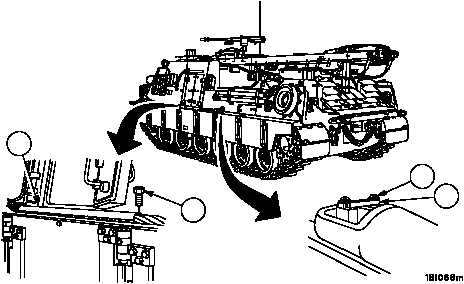TM 9--2350--292--10
0044 00--1
OPERATE TOW CABLES
0044 00
THIS WORK PACKAGE COVERS:
Deploying Cables, Connecting Cables, Disconnecting Cables, Stowing Cables
INITIAL SETUP:
Tools and special Tools
Socket wrench set (item 38, Table 2, WP 0128 00)
50--ton shackles (4) (item 41, Table 1, WP 0128 00)
Personnel Required
Three
Equipment Conditions
Vehicle parked and brakes locked; main engine shut
down (WP 0019 00)
References
WP 0019 00
WP 0041 00
FM 9--43--2
The vehicle is equipped with two tow cables. The cables are stowed on left and right side of vehicle. Tow cables
are used in extreme cases or as a backup when traveling over rough ground (cross--country) (refer to FM 9--43--2)
only when the tow bar is not available for use. Do not exceed 3 mph (5 kmh) while towing disabled vehicle with tow
cables. Make wide sweeping turns made up of many smaller turns to keep both vehicles in line while towing.
DEPLOYING CABLES
NOTE
Use only the M88A2 COEI provided equipment. Do not use other vehicles COEI items as it
may not have the same capabilities as the M88A2 shackles and tow cables.
Tow cables from the brake vehicle to the towed vehicle must cross to form an “X” between the
brake vehicle and towed vehicle. The cable connected to the left side of the brake vehcle
must always cross under the cable connected to the right side of the brake vehicle.
When towing cross--country under extreme conditions, use crossed cables for both the towing
and braking or holdback vehicle. Use an M88A2 as the tow vehicle.
1. Loosen four screws (1) on each end and open two tow cable retainers (2).
2. Remove two screws (3) and tow cable clamp (4).
3. Remove cable from vehicle.
4. Repeat procedures for other cable.
5. Position cable retainers (2) and tighten screws (1) so as not to lose them during towing operation.
6. Install cable clamps (4) and screws (3) so as not to lose them during towing operation.
1
4
3
2

